The Mata ni pachedi (Temple Cloth) is another fine example of a storytelling textile. Our cloth was a gift from storyteller Helen East which she acquired on one of her trips to India in the 1990’s. Later we managed to supplement its display with some printing blocks, pictured below, donated by Jude Willerton.


Made by the Vagri community of Gujarat, who were originally a travelling community, the cloth provided a portable altar and sometimes part of a tent used for devotion and prayer.

Traditionally cloths show the goddess Durga in one of her 64 avatars (incarnations or bodily forms). Cloths are rectangular divided into 7 or 9 parts, each a stand-alone story, with Durga or a Gujarati goddess as the central figure riding on her vehicle. The central figure on this cloth is riding a crocodile so the goddess is Khodiyar Maa (the mother goddess). The rectangles often include a life story of the cloth’s commissioner and/or an image of a priest leading a goat for sacrifice.
The Cloths are made from printed and dyed cotton, hand drawn with a kalam (reed pen or bamboo stick with a cotton swab on the end) and then dyed with block prints. Traditional mata ni pachedi have only three colours; maroon/red representing the earth, black to ward off the evil eye and white (usually the background colour) which stands for purity. Each vegetable dye colour is applied separately. The red colour is from an Alizarin solution. The cloth is fixed and then rinsed in running water between the application of each colour.

The Cloth is prepared by soaking it in water to get rid of the starch and left to dry in the sun. It is soaked in a mixture of cow dung and salt and then boiled. Then it is bleached in a mixture of castor oil and caustic soda, followed by a mixture of castor oil and Harra (myrobalan powder) and then left to dry.
Printing is done with wooden blocks faced with rusted iron motifs. They are soaked for a week in a solution of sugar and the paste of tamarind seeds which when mixed with myrobalan powder produces the back dye.
The story of Khodiyar Maa
The story of Khodiyar Maa dates from around 700CE when the province of Vallibhipur in present day Gujarat, was ruled over by Maharaj Shibhadra. The Maharaj was a good King to his people but this wasn’t due to the counsel of the many ministers in his council but more to his enduring close friendship with a humble man called Mamaniya Gadhvi a devotee of Shiv from the village of Roishala. Mamaniya Gadhvi was the Maharaj’s closest confident and advisor on all things and the two were virtually inseperable.
This state of affairs made the Maharaj’s ministers very jealous, but they feared criticizing Mamaniya Gadhvi because that would anger the Maharaj and turn him against them. So they decided on to feed upon the Maharaj’s belief in omens and portents. One of the ministers went to visit the Maharaj’s queen and pointed out that Mamaniya and his wife were childless despite their long marriage and Mamaniya’s presence at the court was very unlucky as his closeness to the Maharaj would surely reduce the queen’s prospects of having a child.
The queen ordered the king’s guards to stop Mamaniya Gadhvi coming into the palace. When the guards blocked Mamaniya he was desolate and asked for an explanation. He was told that his childless marriage brought bad luck to the palace and he should stay away.
Mamaniya’s heart was broken. He left the palace without argument and returned to Roishala and his wife Minalde, who could do nothing to console him.
Mamaniya decided to go to the Shiv temple and pray to Lord Shiv for children, but Shiv told him that it was not in his destiny to become a father.
So he went to the snake kingdom of Naglok to ask Nagdev, king of snakes for his help. Nagdev took pity on Mamaniya and said he would send seven of his daughters, Nagputris, and one of his sons, Nagputra, to be born in Mamaniya’s home.
Minalde readied eight cradles for their arrival and, as promised, eight snakes slithered in to their house and took their places one in each cradle. Almost instantly they transformed into babies.
Mamaniya and Minalde threw a great party to celebrate the miraclulous event. They named their seven daughters Aaval, Jogal, Togal, Janbai (who became Khodiyar Maa), Holbai, Beejbai, Sosai and their son, Mehrak.
News of the births spread quickly but so did rumors. Her fellow villagers knew Minalde had not been pregnant and they believed that the births were due to evil magic. The Maharaj was delighted with the news that his old friend was childless no more, but worried by the rumors that he had practiced evil magic. Despite this the Maharaj agreed to meet the babies.
The ministers saw this as their chance to assassinate the Maharaj, and secretly they managed to poison the sweets brought by Mamaniya to offer to his old friend when he met the babies.
Maharaj Shilbhadra was delighted when he saw the eight babies and gratefully took the sweets in his hand before lifting the fourth daughter, Janbai from her cradle. The baby was Khodiyar Maa, the mother goddess and she outstretched her hands to bless the Maharaj and as he lifted the sweets to his mouth she made them disappear.
The Maharaj, not realizing that the sweets had been poisonous and his life had been saved, was angered and immediately thought that evil magic had caused the sweets to disappear. He believed the children evil and ordered that each baby should be put into an iron box and thrown into river to drown.
To his amazement the iron boxes did not sink into the waters but floated on the surface and despite the lack of air inside the heavy iron boxes the babies could still be clearly heard crying. They were all still alive, this was not the work of evil magic but the protection only available from the Gods. The Maharaj freed the children and asked forgiveness of his old friend and dealt out justice to his ministers.
Some years later when Mamaniya’s eight young children were playing among long grasses Mehrak was bitten by a venomous snake. His sisters ran to him and the eldest daughter, Aaval said they needed to fetch Ami, the elixir of life, from the Naglok, the kingdom of snakes underneath the sea. It had to be brought before the sunset or Mehrak would die.
Janbai volunteered to perform the task. She got ‘Ami’ from Naglok and while hurrying back to the surface of water she injured her foot on the sharp rocks. She was rescued by a crocodile who took her on its back to the surface of water.
Although limping badly Janbai still reached the Mehrak in time to save his life.
For Janbai’s feat of saving her brother, Aaval decided to name her Khodiyar and declared that she would be in future known and worshipped as Khodiyar Maa. Khodi means an injury to the foot.
The crocodile, Magar became Khodiyar Maa’s vehicle and allowed her to move freely controlling both land and water.





